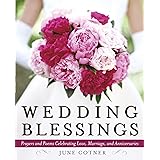The journey to a dream wedding is often paved with good intentions and, frequently, unexpected expenses. According to recent industry reports, the average wedding cost continues to climb, with many couples facing difficult choices between their elaborate visions and their available funds. As highlighted in the accompanying video featuring Suki and Gurj, planning a significant event like a large Indian wedding presents unique financial and interpersonal challenges. This particular couple navigated a complex landscape of parental contributions, individual desires, and the sheer scale of an event catering to around 900 guests for their reception alone.
Indeed, the pursuit of “the perfect day” can quickly lead to the question: “I do, but at what cost?” The transcript reveals a dynamic where the bride, Suki, an enthusiastic television reporter, consistently sought “unique” and “couture” elements, while the groom, Gurj, a chef, acted as the reluctant financial gatekeeper for his father, “Papa D,” who was footing the majority of the bill. This scenario underscores a common dilemma in wedding planning: how to balance aspirations with a pragmatic wedding budget.
The Financial Tightrope Walk: Setting Your Wedding Budget
Establishing a realistic **wedding budget** is arguably the most crucial step in the planning process, yet it is frequently where the most significant disagreements arise. As seen in the video, Gurj’s father, Papa D, was designated as the primary financier for the reception, effectively making him “the banker of the family.” While Papa D expressed faith in the couple, he also expected prudence, not wanting to be put “in the poor house.” This dynamic immediately created a tension between Suki’s desire for an opulent “winter wonderland” wedding and Gurj’s responsibility to manage his father’s expectations.
The challenges intensify when a significant portion of the wedding expenses is covered by family members rather than the couple themselves. It introduces additional layers of decision-makers and varying expectations. For Suki and Gurj, early discussions with their wedding planners, Laura Atendido and Kelly Spinelli, quickly exposed the disparity in their “dream” of an **Indian wedding budget**. While Suki envisioned extravagance, Gurj, mindful of Papa D’s retirement plans, advocated for a more restrained approach. This constant push and pull exemplify why open and honest conversations about financial limits are paramount from the very beginning, preferably before any vendors are engaged.
When Dreams Clash with Dollars: Communication is Key
A lack of alignment between partners regarding the **wedding budget** can lead to significant stress, as demonstrated by Suki and Gurj. Suki expressed her desire for something “black and white, classy, unique” and “very couture,” expecting her planners to bring equally grand ideas. In contrast, Gurj had “not too many ideas” beyond keeping costs down. This fundamental difference in vision became a recurring theme, with Gurj frequently reminding everyone about the budget while Suki pursued her ideal. The wedding planners, with their five years of experience, attempted to mediate, emphasizing the need for open lines of communication, especially when parents have a “big financial role.”
Effective communication extends beyond the immediate couple to all contributing parties. This involves explicitly defining financial boundaries and priorities. For instance, when Gurj clarified that his dad would pay for “everything that has to do with the reception,” it became a clear area for the planners to focus their budget discussions. Despite Suki’s assertion that Papa D had “complete faith” in them, the reality of the numbers quickly brought Gurj back to the “on budget” constraint. This highlights the importance of having documented financial agreements and regularly revisiting them as planning progresses, rather than relying solely on verbal assurances.
Navigating Cultural and Family Expectations in Wedding Planning
Large-scale cultural weddings, such as the Indian wedding planned by Suki and Gurj, come with their own distinct set of expectations that significantly impact the **wedding budget**. One of the most striking details in the transcript is the guest list: a staggering 900 people expected for the reception alone. While Suki was “only allowed about 100 or 150 of those guests” personally, the vast majority were family invitations. This expansive guest list dictates not only the venue size but also catering, decor, and overall logistical complexity, driving up costs exponentially.
The social aspect of such weddings often means that budget decisions are not purely economic but also involve a desire to “show off a little bit to his friends,” as Gurj explained regarding Papa D’s motivations. This cultural expectation to host an impressive event can put immense pressure on the budget. Balancing this desire for grandeur with financial realities requires careful negotiation and a clear understanding of what elements truly matter to the families involved. It’s a delicate dance between honoring tradition and ensuring financial responsibility.
The Bridal Wardrobe: A Symbol of Tradition and Expense
In many cultural weddings, particularly Indian weddings, bridal attire is not merely an outfit but a central element of tradition, often involving multiple changes and significant investment. Suki’s ambitious wardrobe plan, involving “close to like nine to 12 to 15” outfits, starkly contrasted with Gurj’s more conservative suggestion of “three.” The discussion around a single reception outfit highlights this cost. Suki initially selected a potential $2,300 outfit, much to the dismay of Gurj’s sister, Karm Layagh, who was described as the “protector of the checkbook” and advocated for a more modest $500 option.
Beyond the sheer number, the cost of these outfits can be substantial, especially when sourced from abroad, as Gurj’s wedding outfit was from India. The incident where Gurj’s outfit didn’t fit, requiring him to “lose some weight” or face costly alterations or a new purchase, further illustrates the unpredictable expenses associated with wedding attire. This specific data point, while seemingly minor, underscores the importance of precise measurements, realistic expectations, and having contingency funds even for personal items within the overall **wedding planning budget**. The emotional attachment to these garments, as Suki declared, “whatever outfit I do decide on, regardless of the cost, he’ll be happy with it,” often overrides practical financial considerations for the bride.
Decoding Decor: From Winter Wonderland to Budget Woes
Transforming a venue to match a specific theme, such as Suki’s “winter wonderland, black and white” vision, can quickly become one of the most expensive line items in a **wedding budget**. The transcript detailed several decor options presented by the decorator, each escalating in price. For instance, a basic Damascus runner was considered, but Suki was drawn to more elaborate options like a full Damascus tablecloth with a candelabra, described as “very couture.” Gurj’s immediate reaction, “Couture sounds expensive,” proved accurate.
The decorator presented options like black pintuck with ostrich feathers and towering silver candelabras, aiming for a “bold statement” and “wow factor.” The ultimate choice, “all full crystals” centerpieces, perfect for a “winter glam” theme, came with a hefty price tag of $150 per table setting. With approximately 90 tables for 900 guests, this single decor element translated to a staggering $13,500 just for centerpieces and table dressings. Added to this was the need to redecorate the venue’s existing yellow and red walls to match the black and white theme, estimated at another $7,000. These figures quickly pushed the total decor budget “over $20,000,” a figure that left Gurj lamenting about putting his father “in the poor house.” The desire for a cohesive aesthetic, while understandable, often comes at a significant premium, especially when venue walls require extensive transformation to align with a specific theme.
The Allure of the Unique: Snow Machines and Beyond
Couples often seek unique elements to make their wedding memorable, and Suki was no exception, asking her planners for ideas “no one has ever seen at an Indian wedding before.” The suggestion of a snow machine, designed to create a “fine to medium snowfall” that dissipates without residue, perfectly fit her “Winter Wonderland” theme. While seemingly extravagant, this particular “unique” feature was surprisingly economical, renting at $189.99 a day with snow fluid at $59.99 a gallon, totaling less than $250 for the day. Laura even highlighted this as a “small fraction” of the overall budget, promising a “big impact” without breaking the bank.
However, even small, relatively inexpensive additions can become points of contention when the overall **wedding budget** is already strained. Gurj was hesitant, envisioning the difficulty of explaining the need for “fake snow” to Papa D. This scenario illustrates the psychological impact of cumulative costs. While $250 might be “pennies” in the grand scheme of a multi-thousand-dollar wedding, each additional “penny” adds to the perceived financial burden and the mental toll of constant justification. It emphasizes the importance of prioritizing unique elements based on their perceived value and impact versus their actual cost, and how even minor expenses can fuel budget disputes if not communicated effectively.
The Unforeseen and Unavoidable: Planning for Contingencies
Even the most meticulously planned weddings can encounter unforeseen challenges. The video briefly mentions a “random accident” where the reception backdrop fell just before guests arrived. While initially alarming, the immediate response of the wedding planners and decorator to “save the day” prevented it from becoming a major disaster. This incident powerfully highlights the indispensable role of experienced wedding planners in crisis management. Their ability to calmly assess and rectify problems, sending “extra staff to ensure that it stays” in place, saved the day and allowed the couple and guests to enjoy the celebration without significant disruption. The fact that “not a lot of people even noticed” speaks volumes about their professionalism.
Unexpected issues, from an ill-fitting groom’s outfit to decor mishaps, are almost inevitable in large-scale events. This is why a critical component of any comprehensive **wedding planning budget** is a contingency fund, typically 5-10% of the total budget, set aside for emergencies and unforeseen costs. While Suki and Gurj’s journey was fraught with financial disagreements and the complexities of managing a large **Indian wedding budget**, the ultimate success of their day, despite a few dramatic moments, underscores that careful planning, dedicated professionals, and a willingness to adapt are crucial. Ultimately, navigating the financial and emotional landscape of wedding planning requires not just a budget, but also resilience and open communication to truly celebrate “love at first bite” without the lingering sting of overspending.











